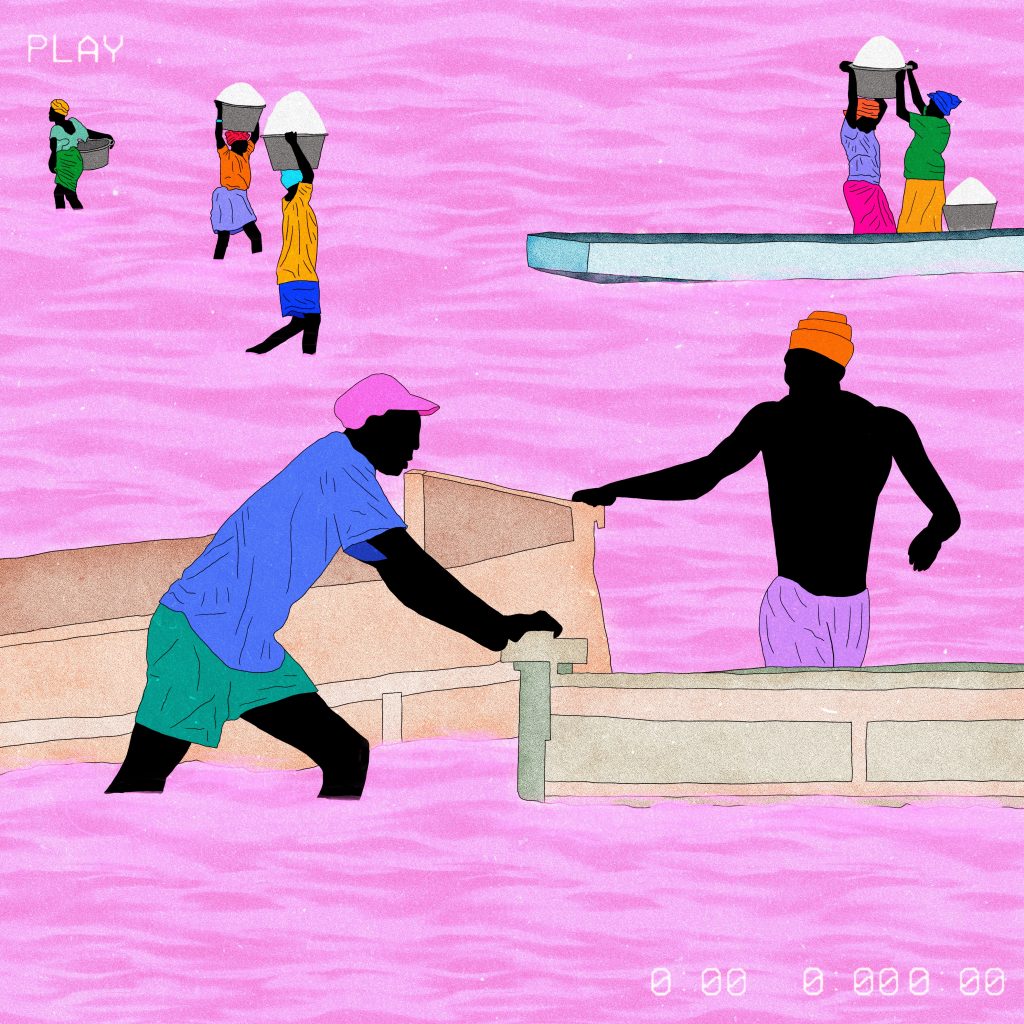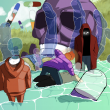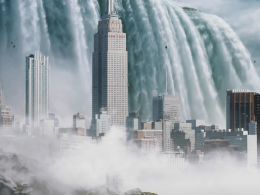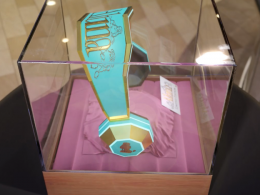You’re an artist that plays with different genres, you create generative art, illustrations and more. What are some of the common themes that you explore in your work?
I would say that I am driven by questions when making work. For example, some of my work is exploring form for form’s sake – what does good look like, how can I mess with it? Some it explores emotional turmoil – what I am feeling, why am I feeling a particular emotion? Some of it recounts childhood memories – what do I remember, what was going on, where was I? And finally some of it interrogates my positionality with regards to the systems that govern my mind and body – who am I, what is my place in the world, what do I want it to be instead? This variety probably translates in the different styles I experiment with.
Talk about how NFTs are changing the lives of artists on the continent.
Artists from Africa have made waves in the NFT market, sharing art with resonance, building communities, and earning income doing what they love. Through our deeply rooted practices, we promote cultures from around the continent on the blockchain, thereby immortalizing the influence of those cultures on the crypto art movement. NFTs have given us access to a global market without Western intermediaries and to continue profiting from our works long after they’ve been sold for the first time. This is a revolution in the idea of ownership in the art world that ensures artists from the continent can, for the first time at this scale, build generational wealth and retain proof of our creations’ influence in a global art movement. However, avenues for funding to afford digital art tools, softwares, time, minting fees, and psychological safety to create are few and far between for digital artists from the continent. Though many of us have broken through these barriers to become full time artists earning well, many of us still aren’t able to work on large scale projects as we are still focused on making ends meet. This is where I think DAOs like Cyber Baat, communities like African NFT, and platforms like Mint Fund come in – building institutions that even out the barriers to success in the NFT space is critical to continue onboarding more artists from the continent, and to ensure the ones who are already here feel safe, informed, and supported.
What are the biggest misperceptions about African artists?
That is an excellent question. Africa is incredibly misunderstood – much of this, by design of course. First, there is this idea that Africa is a monolith when in fact it is a continent with 54 sovereign nations, over 3000 communities, and nearly as many languages spoken. There is an incredible amount of diversity of practices, perspectives, and cultures in this enormous continent whose territory is big enough to fit in the U.S., China, India, Japan, Mexico, and over 20 European nations, combined! This of course translates to art as well – the subjects, the mediums, the perspectives are as diverse as the people that address them and the places they come from.
Second, there is the idea that we are all helpless and in need of rescuing, which makes my blood boil. Most African nations became sovereign from their colonial masters about 60 years ago. Before that, the continent was subjected to 400 years of the transatlantic slave trade and 100 years of colonialism. To put this in perspective, my grandparents lived under colonial rule, their parents lived their entire lives under colonial rule, and their families lived through slavery for generations before that. The memory of subjugation is still fresh in our collective psyche and its impacts are still thoroughly evident in everyday life to this day. Despite all of this, and through all of it, art by creators all over Africa has endured and beyond that, influenced some of the most important art movements in history. So no, we aren’t helpless and in need of rescuing. The reality is quite the opposite: time and again, we slip through the cracks of a system designed to keep us undervalued, appropriated, and exploited to create and move people all over the world. The amount of resourcefulness and ingenuity it takes for an artist from the continent to show up in the Metaverse and break through is truly remarkable.
Finally, there is a misconception that crypto is going to find its apogée in the West. Some of the most influential thinkers in the space fall victim to this belief, which could not be farther from the truth. The hard cold facts are: (1) cryptocurrency adoption in Africa grew 1200% between July 2020 and June 2021, making it the fastest adoption rate in the world; (2) transactions volume made up of retail-sized transfers in Africa was 7%, against the global average of 5.5%; (3) Africa has surpassed every other continent in the world in volume of peer to peer crypto transactions this year; (4) 6 out of the 2021 Global Crypto Adoption Index Top 20 countries are in Africa; (5) cross-region transfers make up a bigger share of Africa’s cryptocurrency market compared to any other region at 96% of all transaction volume, versus 78% for all the other regions combined. The deepest pockets in cryptocurrency might not be found in Africa (yet), but the widespread adoption and the practical uses of crypto in everyday life – from buying goods to settling debts – show that the future of crypto is in fact on the African continent.
What this means for art is that every single crypto holder on the continent could be a potential collector of art. When (not if) this eventually happens, the current frameworks guiding the production of art from the continent and crippling its diversity will crumble – for the first time in a long time, Africans will decide for themselves what is art, what is good art, and what is art worth buying. The answer might be troublingly different from what the traditional art world has had us believe in the past.
How are you using your work to change the narrative about Africans and their work?
My work definitely doesn’t relate to the whole of Africa – I couldn’t even if I tried. All I am doing is bringing my whole self to the work, which is a microcosmic perspective. I am bringing my little corner of the world to the blockchain and hopefully that gives people a small window into how I see and engage with the world. As an artist, I think that’s really all I can do.
What is the best thing about creating NFTs?
Agency! I can choose what work I share with the world, how I share it, where I share. There is something really powerful about the ability to shape your own market – I can more or less set the pace and build a community around my practice. It’s been an empowering journey and it feels good to be in the driver’s seat.

by Linda Dounia, minted on Foundation













